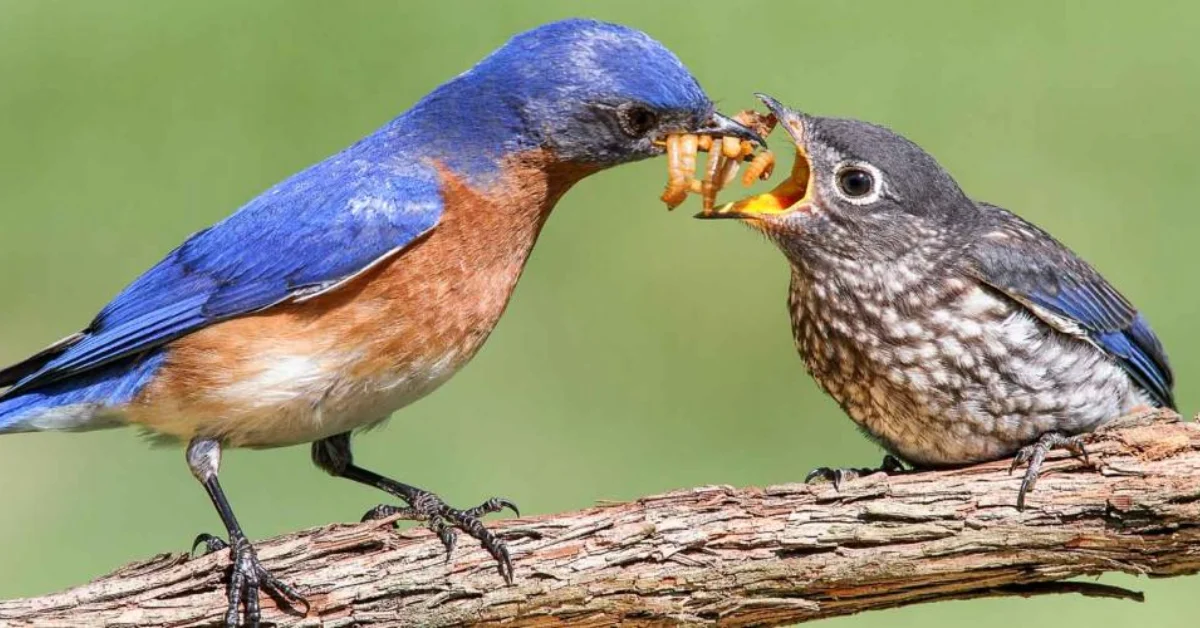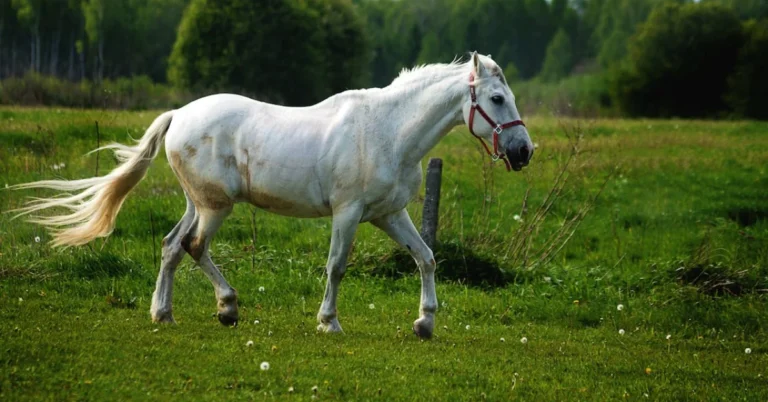The northern American bluebird, with its beautiful blue plumage, is a sight to behold as it glides over meadows and relaxes on fences. These tiny songbirds are visually appealing and play an important ecological function through the foods they select to eat. Gaining knowledge about the nutrition of bluebirds can aid in our comprehension of their behavior, biology, seasonal adaptations, and interactions with neighbor co systems. This article examines the foods that bluebirds eat throughout the year. It investigates what makes up their primary diet, how their feeding patterns fluctuate with the seasons, which natural food sources we might supply to help them, and the overall ecological impact of their dietary choices, including insights into various types of blue birds.
An Insect-Focused Diet Packed with Protein

The primary source of high-quality protein for breeding, growth, and energy in a bluebird’s year-round diet is insects. The bluebird uses its airborne habitat to collect insects, as it is an aerial insectivore. Learn more about the dietary habits of blue birds in California and how they contribute to their overall well-being. Using sharp eyesight, they scan for movement against the landscape and swoop down to snatch their prey with precision timing. Their slender beaks easily manipulate and consume soft-bodied insects.
So which insects do bluebirds relish? Here’s an overview of their main targets:
- Caterpillars: A preferred prey, caterpillars are rich in protein and moisture. They’re an especially important food source when raising nestlings.
- Beetles: Ground beetles, weevils, and other varieties provide a hefty dose of proteins along with beneficial fats.
- Grasshoppers & Crickets: Abundant during summer and fall, these leaping insects are high-calorie snacks.
- Flying Insects: On the wing, bluebirds deftly catch flies, winged ants, termites, emerging aquatic insects, and aerial spiders.
- Larvae: The larval forms of many insects, especially flies, moths, butterflies, and beetles, offer tender concentrated nutrition.
The availability of these insect groups, including hummingbirds, varies across seasons and regions. But no matter the habitat, arthropods constitute over 75% of a bluebird’s annual diet. This exceptional reliance on bugs ties bluebirds to the health of surrounding ecosystems and insect populations within them.
Adaptability – Switching Food Sources Across Seasons
Bluebirds exhibit great adaptability in utilizing fluctuating food resources across seasons:
Spring

In spring, insect numbers begin to increase but are still limited. At the same time, bluebirds have high nutritional needs as they establish breeding territories, build nests, lay eggs, and raise nestlings. Supported by their insect hunting skills, bluebirds are well-suited to provide for their young despite low prey abundance. They target calorie-dense, soft-bodied larvae and caterpillars to develop chicks swiftly.
Summer

The long days of summer bring a bonanza of insects, allowing bluebirds to feast readily. With insects at their peak abundance, a heated bird bath provides bluebird parents the opportunity to bolster their reserves while easily feeding another brood or two of nestlings. They focus intently on gathering protein-packed beetles, grasshoppers, ants, and bees to sustain the energetic demands of the breeding season.
Fall

As insect numbers decline with the cooling weather, bluebirds shift to eating fruits and berries in autumn. Varieties like dogwood, sumac, juniper, and pokeweed supplement their diet with carbohydrates and essential vitamins to prepare for winter. Their broad palate allows them to switch food sources, supporting survival.
Winter

Finding insect prey grows challenging as cold temperatures set in. In winter, bluebirds include more berry and fruit sources like mistletoe, sumac, black gum, and deciduous holly. They frequent open fields, orchards, and backyard feeders in the lean months, where they can access energy-dense suet, mealworms, and raisins. Backyards that provide winter bird food offer a lifeline.
Backyard Offerings – Supporting Bluebirds at Feeders
Backyard bird enthusiasts can lend bluebirds a helping hand by offering specialized feeders and quality foods. Consider adding bluebird feeders designed with narrow openings that deter larger aggressive birds. Then stock them with nutrient-rich options:
Suet Cakes or Plugs
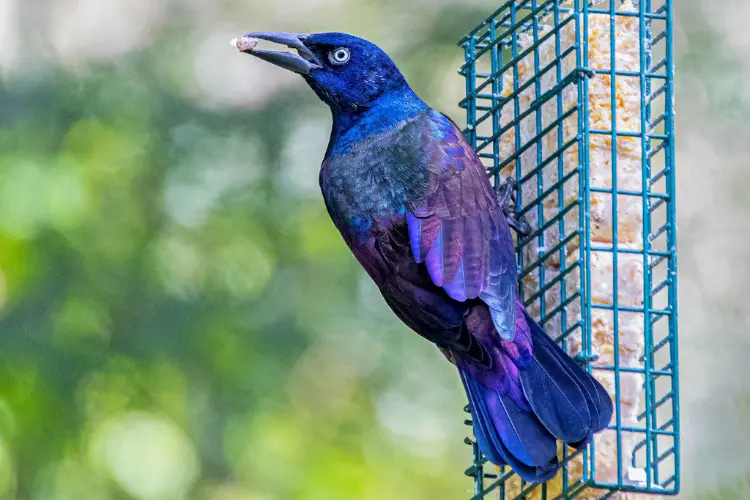
Animal-derived suet provides concentrated calories to help bluebirds survive cold snaps. Look for suet fortified with insect materials like mealworms or dried flies to closely mimic their natural diet. Avoid vegetarian suets, which bluebirds tend to ignore. Hang suet feeders in a sheltered location to prevent spoilage.
Dried Mealworms
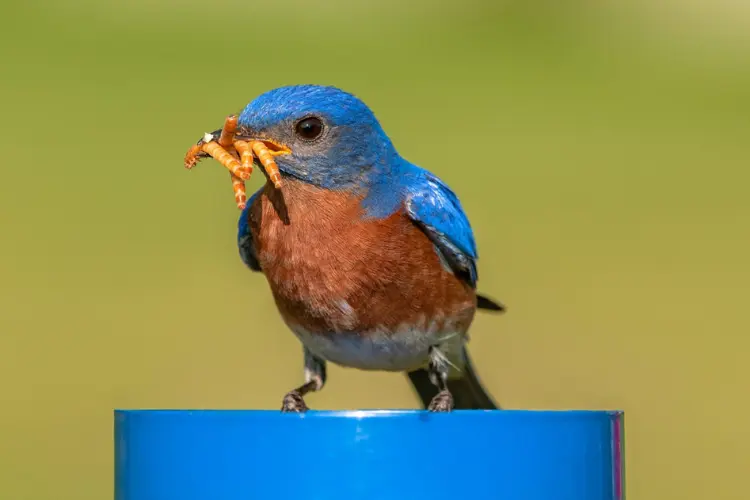
Dried mealworms are an excellent source of protein and fat to supplement natural insect intake. When raising chicks, bluebird parents will gather mealworms nearly non-stop to satisfy their nestlings’ voracious appetites. Consider offering live mealworms to provide an important boost.
Fruits and Berries
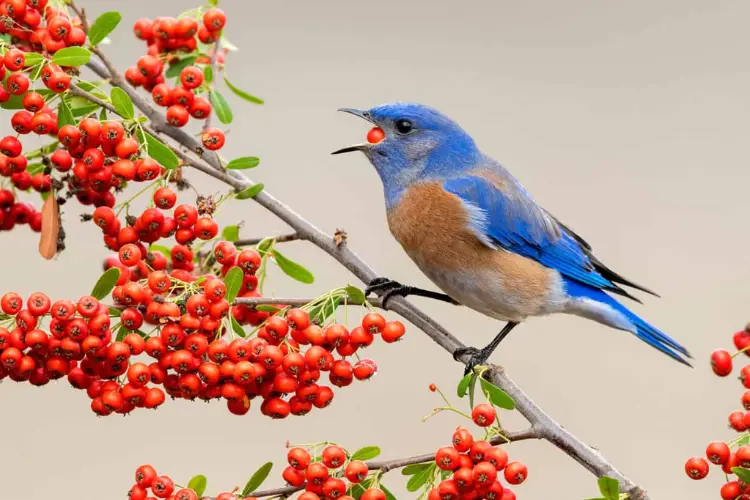
Dried cranberries, raisins, currants, and other chopped fruits simulate natural berry sources bluebirds enjoy. Mix dried fruits with suet or mealworms to increase their appeal. You can also skewer cut grapes, berries, and bananas onto specialized fruit feeders. Always remove old fruit to deter flies, bees, and mold.
Providing any supplemental foods should be done with care to avoid contamination or causing harm. Keep feeders thoroughly clean and positioned away from predators. Avoid foods with chemical additives or artificial colors. With conscientious backyard support, we can assist bluebirds in finding the nourishment they need.
Ecosystem Guardians – The Broader Significance of Their Diet
When we explore the question “What do bluebirds eat”, more than their survival emerges. The dietary patterns of bluebirds directly influence the health of surrounding habitats and ecosystems:
Insect Regulation
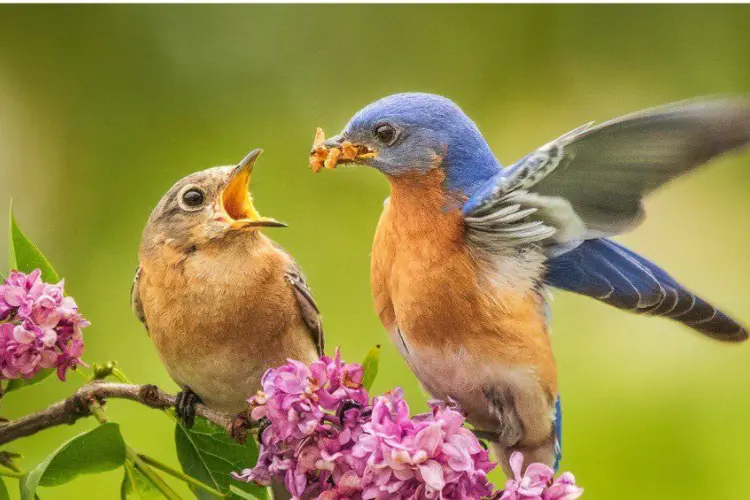
Bluebirds contribute significantly to managing insect populations, including many considered lawn and garden pests. Their roles as aerial hunters who consume thousands of insects daily help control outbreaks that could otherwise decimate vegetation.
Seed Dispersal
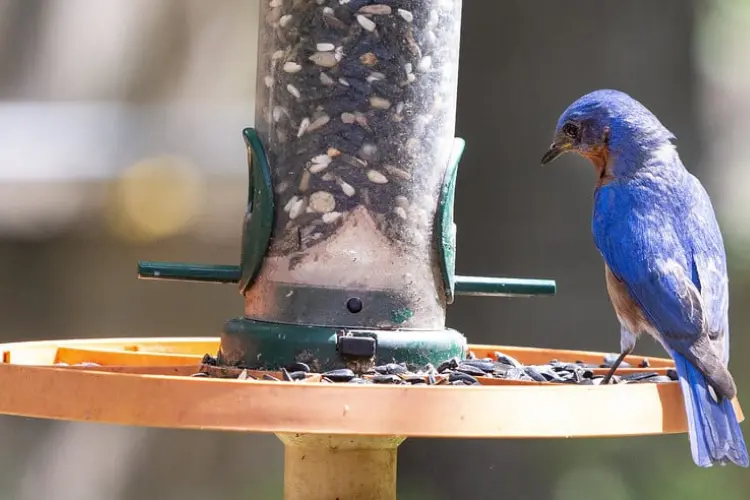
As bluebirds transfer pollen between plants and digest then spread seeds of berries and fruits they eat, they actively contribute to plant reproduction. This ensures the continuity of food sources and fosters greater botanical diversity.
Nutrient Distribution

Through their droppings, bluebirds redistribute concentrated nutrients like nitrogen and phosphorus more widely onto the forest floor and fields. This aids decomposition and soil enrichment to stimulate plant growth.
Their dietary flexibility and mobility enable bluebirds to provide vital ecosystem services across a mosaic of habitats. Supporting their nutritional needs through backyard offerings ultimately gives back to the health of the natural environments we all share.
Final Thoughts
The bluebird’s diet provides a telling window into biological adaptation. We witness how shifting to eat insects, fruits and supplemented feed allows survival through seasons of abundance and scarcity. We discover their indispensability in moderating prey species, dispersing plant propagules, transporting nutrients, and upholding ecological balance. And we can choose to actively aid their quest for nourishment by catering to their taste for fat-rich suet and juicy mealworm delights. With conscious wildlife gardening, we help sustain bluebirds to sing another spring.

